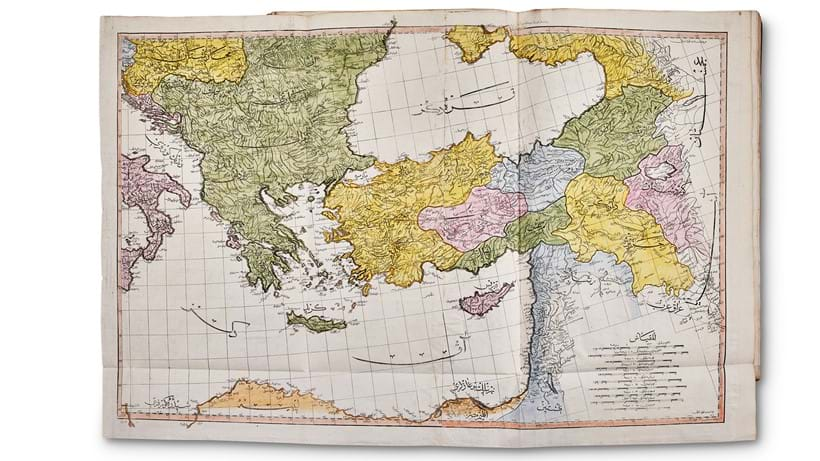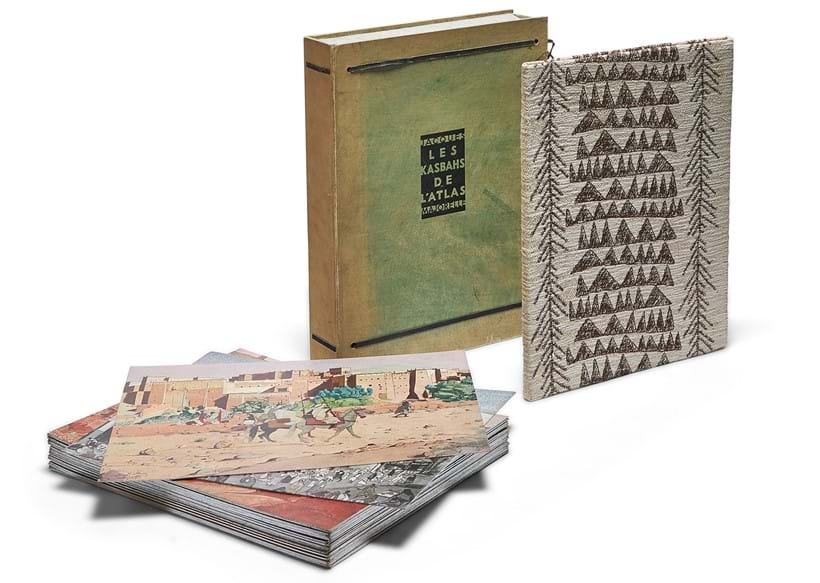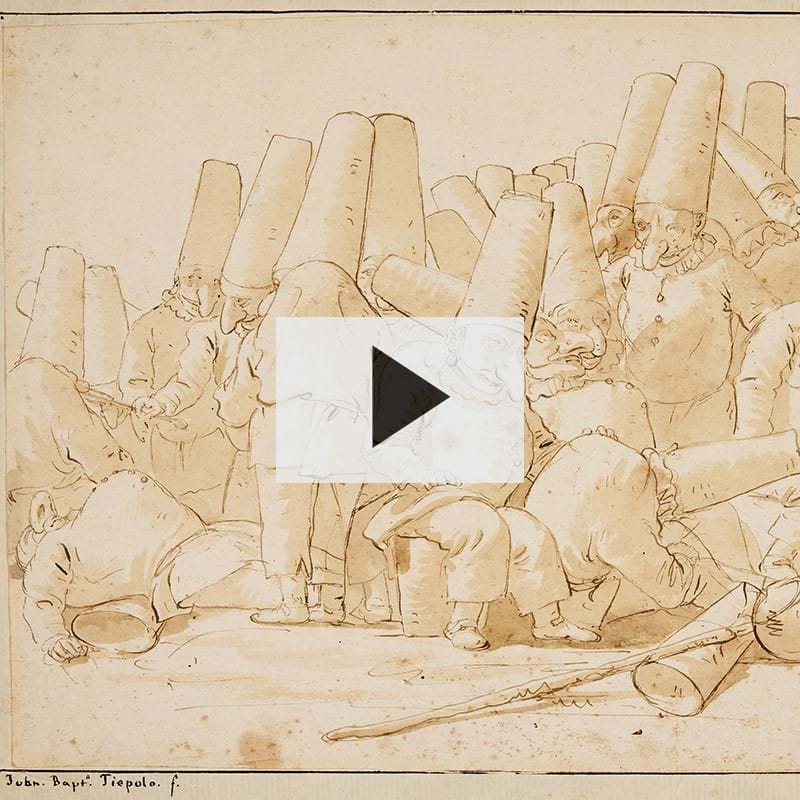From one of the Rarest Atlases to a Royal Gift | Joe Robinson, Head of House Sale and Private Collections explores some of the fascinating discoveries from Weston Hall attics
This autumn, on 16 & 17 November, Dreweatts will be offering the contents of Weston Hall, Northamptonshire in our auction 'Weston Hall and the Sitwells: A Family Legacy'. Here Head of Sale, Joe Robinson, takes a look at some of the exciting discoveries found at Weston Hall, which will feature in the auction.

Weston Hall was a fascinating encapsulation of not just the Sitwell family history, but also the social history of Britain over the last few centuries. With the extensive collection of works having been preserved in the house for so long, it is not surprising that some were relegated to the attics over various generations and laid dormant waiting to be discovered once more.
Walking through the attics was like uncovering an Egyptian tomb, with ‘wonderful things’ at every turn and under every box and layers of dust. It has been thrilling to go on a journey of discovery with the family and to find so many hidden treasures with such wonderful provenance.
It is so rare for a collection which such history and such breadth to come to the market, even less allow us to feel like we are exploring a true piece of forgotten history.
Punchinello in the Pantry
The discovery of the picture by Giovanni Battista Tiepolo (1696-1770) in the Weston Hall picture attic has been one of the stand out memories of this sale. The drawing is from a distinctive group of documented Punchinello drawings. However, the actual attribution remained forgotten…until now.

Punchinello was the buffoon character of the 17th century commedia dell'arte, a subject that Tiepolo embraced from the late 1720s through to the early 1760s, primarily in drawings, executing about thirty-six, but also in at least two paintings, and etchings. Tiepolo’s interest in Punchinello was most likely stimulated when he was in Verona working on the illustrations for Scipione Maffei’s Verona Illustrata (c. 1725). The drawing offered here dates from the early 1730s; it retains the fine delicate line of the earlier drawings but includes two tones of painterly wash.
Tiepolo, in contrast to his son Domenico, who shows Punchinelli engaged in everyday activities in his Divertimento per li Regazzi, portrays his Punchinelli making and eating gnocchi, and suffering from the excesses of overindulgence. The subject derives from a regional festival, "venerdì gnoccolare", which took place in Verona on the last Friday of Carnival.
George Knox, the Tiepolo art historian, suggests that this drawing is among the earliest of the Punchinello drawings because of its fine line and delicate, even use of wash. He further proposes that this drawing may be linked stylistically with the studies for the Villa Loschi at Biron, executed around 1734. The present drawing, and others of this period, undoubtedly mark the moment that Tiepolo's draftsmanship assumes its mature form.
The later life of this drawing was as part of the celebrated art collection of Henry Oppenheimer, F.S.A., until it was bought by Sir Osbert Sitwell in a three-day sale held by Christie’s in July 1936.
The Rarest of Atlases
This atlas, found in the deepest depths of Weston Hall’s attics, is the first large folio world atlas printed in the Islamic world, 'of which only 50 copies were printed', (Catalogue of Library Congress). The maps are based on William Faden's General Atlas (publ. 1796), accompanied by Raif's geographical treatise.

Several copies were reserved for high-ranking officials and important institutions. The remaining copies were partially destroyed in a warehouse fire during the Janissary revolt of 1807/8, during which Raif himself was killed. It is thought that a maximum of 20 complete copies might survive in institutional or private libraries, other estimates suggest fewer than 10. It is not known how this folio arrived at Weston. However, it is possible that this was brought back to Britain by General Lord Hely-Hutchinson of Alexandria during his military campaigns in the Middle East where it would eventually be brought to Weston by his son, Col. Henry Hely-Hutchinson upon his marriage to Harriet Wrightson.
The Hely-Hutchinson’s certainly left an indelible mark on the collection at Weston Hall. Their military prowess and connections enabled them to socialise with some of the very best of British Society.
A Gift from George IV to a Loyal Friend?
Next we have this George III Infantry Officer's sword and scabbard from the 19th century. The inscription on the leather scabbard 'Tatham to his Majesty' refers to Henry Tatham, Sword Cutler and Belt Maker to the King, established at no. 37 Charing Cross near the Admiralty in the late 18th/early 19th centuries.

Although the bill for the sword offered here cannot be identified, on the 17 July 1799, George, Prince of Wales (later George IV, 1762-1830), was invoiced for 'A Spanish Sword', 'An Old English Sword', 'A silver gilt Dress Sword from the late King of France's Cabinet' together with 'A very old German Rifle' and 'A very elegant silver mounted gun'; the total amounting to £72 17s 6d. The Prince evidently did not settle his account on time for the receipt of payment from Tatham was not issued until 25 April 1801. Although only five bills from Tatham are extant in the Royal Archives, they show that he was supplying swords to the Prince of Wales/George IV, both antique and new, from 1799, and possibly earlier, to at least 1826. Given the close friendship that existed between the Prince of Wales/George IV and John Hely-Hutchinson, 2nd earl of Donoughmore (1757-1832) - it is possible that this sword was a personal gift from George IV to his trusted confidant Lord Hely-Hutchinson.

An Iconic Style
Dame Edith Sitwell was a woman with a cast iron integrity in her writing and a definite perception of self. In later life this carried through to what she wore and the jewellery she chose, echoing what she believed to be her relationship with distant Plantagenet ancestors. She once quipped in an interview that she was ‘throwback’ and that people would ‘question the existence of the almighty’ should they see her in fashionable clothes.

This custom-made celadon green silk and gilt metal brocade full length evening cape, possibly by Nina Astier, dating from the first half of the 20th century, features a stand-up collar and a pleated detail to the back. Highly dramatic, the style was formed by her life long friend Pavel Tchelitchew who designed ‘Plantagenet’ dresses for her in Paris in the early 30s but in later years she mainly designed her clothes herself. This particular piece was worn in a portrait by George Platt Lynes taken in 1950.
A Rare Album of Photographic Experimentation
Another exciting work to be unearthed in the attic was a rare album of photographic experimentation by the eminent French designer and painter Jacques Majorelle (1886-1962).

It is number 339 of 520 copies made in 1930. The plates that make up this album, titled Les Kasbahs de l'Atlas reproduce the paintings and drawings that Majorelle made between 1920 and 1929 and demonstrate the earliest use of powdered gold and silver in his work. Comprising 30 coloured plates printed on thick card, with a photograph of the author and aluminium endpapers with maps, the album is bound in original loose woven decorative cloth.
Bright Young Gifts
The relationship between the Sitwells and Cecil Beaton is well known. This is a very unusual work by Cecil Beaton with very few, if any, other examples known.

The signature is undoubtedly by the hand of Cecil Beaton, thus it is likely that this was an impromptu work created as a gift for Georgia, Lady Sitwell - the wife of Sir Sacheverell Sitwell and fellow member of the Bright Young Things. Other photographs by Cecil Beaton appear in the sale but it is the alterations to the present work to create a re-interpreted piece of art which make it so intriguing.
AUCTION DETAILS
Tuesday 16 & Wednesday 17 November | 10.30am BST
Donnington Priory, Newbury, Berkshire RG14 2JE
VIEWING:
Highlights exhibition at Dreweatts London from Tuesday 28 September - Friday 1 October 2021:
16-17 Pall Mall, St James's, London SW1Y 5LU
Full auction on view at Dreweatts Newbury from Wednesday 10 - Monday 15 November 2021:
Donnington Priory, Newbury, Berkshire RG14 2JE
To book an appointment, please email: housesales@dreweatts.com or call 44 (0) 1635 553 553.
ENQUIRIES:
The catalogue will be available and online in October. If you wish to purchase a printed catalogue, the cost including postage is:
UK: £30
Europe: £40
USA / Africa / Asia: £50
Australasia: £55
To pre-order a catalogue, please pay online here. Please put 'SITWELL AUCTION CATALOGUE' in the 'Invoice number' field and ensure you complete all other fields.
General enquiries: + 44 (0) 1635 553 553 | housesales@dreweatts.com
Press enquiries: smaylor@dreweatts.com












